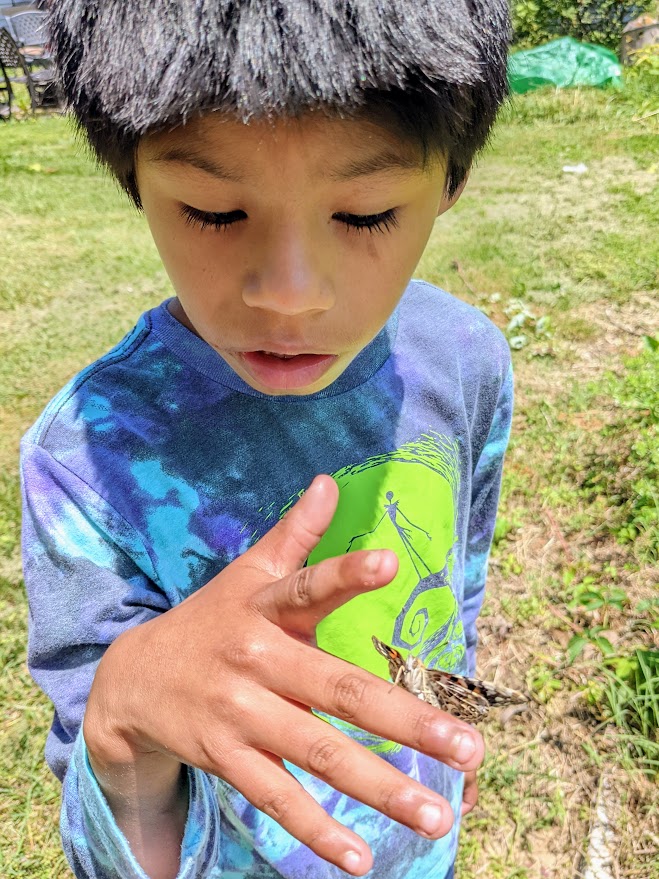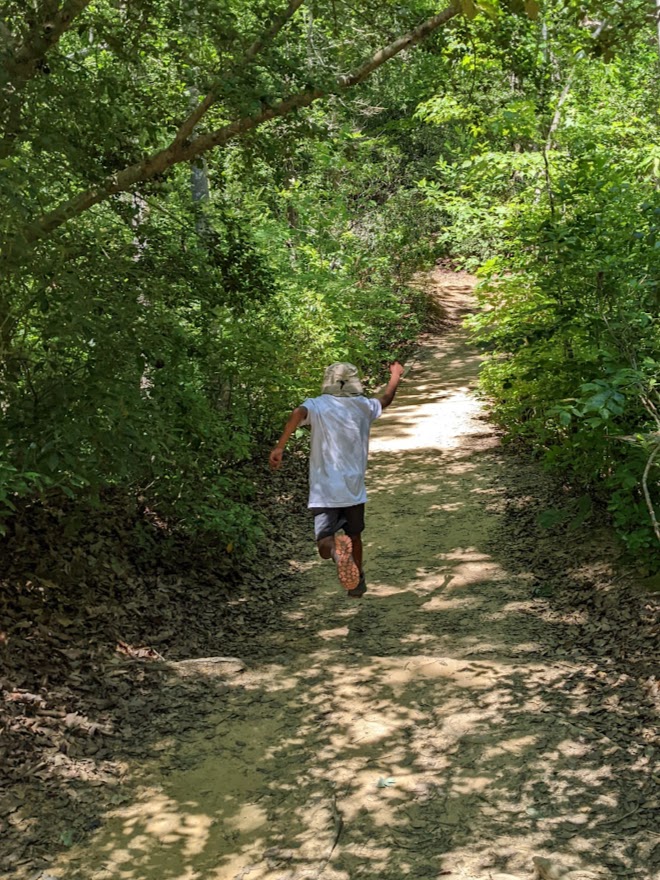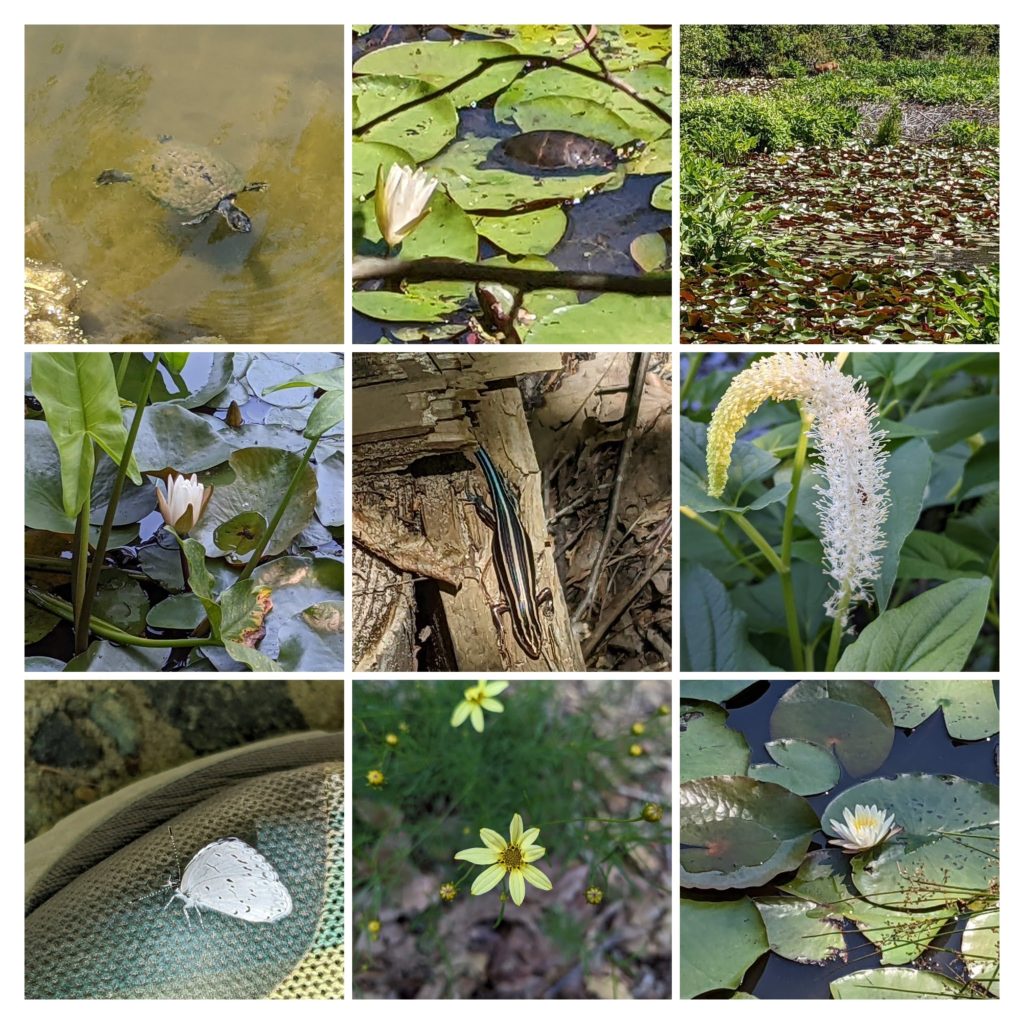On a Quest for Planet’s Most Important Species





By Molly Weeks Crumbley
Can you name a pollinator other than a honeybee?
I know I must have learned about pollination in school, but it’s not something I really gave much thought to as I grew up. Sure, I admired a flower in bloom or a butterfly as it flitted past, but I didn’t appreciate how important pollinators were until I began homeschooling my son a few years ago. As he and I delved into natural science together, our studies led us to the different life cycles of animals, insects, and plants.
We ordered a butterfly house and a few cups of caterpillars to tend, and I promptly fell in love with them. The more we learned together, the more I realized how important pollinators were, and not just our annual Painted Lady butterfly family members. We learned that tons of other creatures were pollinators, too.
“Birds, bats, butterflies, moths, flies, beetles, wasps, small mammals, and bees are all pollinators,” explains the Maryland Park Service on their website. “They visit flowers to drink nectar or feed off of pollen and transport pollen grains as they move from spot to spot.”
That may not sound like much, but it turns out we would be doomed without our flower-crazy creatures.
Survival Story
Pollinators are, in fact, integral to the survival of all species on the planet.
“Pollination is not just fascinating natural history. It is an essential ecological survival function,” states the United States Forest Service. “Without pollinators, the human race and all of Earth’s terrestrial ecosystems would not survive.”
When insects and animals participate in pollination, they help plants reproduce and grow, which in turn helps create food sources, contributes to the production of oxygen, purifies water, and prevents damaging erosion. In other words, little creatures make a huge impact.
Two years after falling down a rabbit hole of pollination information, my family has taken some steps to make our backyard space more inviting to them. In addition to the little vegetable garden that we already had, we created a small pollinator garden using native plants. As our coneflowers, goldenrod, milkweed, and black-eyed Susans grew and bloomed, we were shocked at the sheer number of creatures who were attracted.
My son and I started spending mornings in the yard to watch the different butterflies, bees, beetles, and hummingbirds who came by for a drink. So far, we have identified over 30 different species just in our own yard and my neighbors are used to seeing me crawling around the dirt with a camera to snap bug pictures.
Save the Bees (and Other Pollinators)
Unfortunately, I have come to learn that many pollinators are in decline as they lose habitats to disease, drought, and human development.
Fortunately, places like land preserves and parks play a big role in protecting and celebrating our pollinators, and here in Maryland we have lots of those spaces.
As the Maryland Department of Natural Resources states, “One of the main reasons for pollinator decline is the loss of habitat. Maryland State Parks are a great place to learn more about pollinators and the important habitats that support them.” To that end, the Maryland Park Service is going a step further and celebrating the humble pollinator in their 15th year of the popular Park Quest program. This year’s theme: Parks for Pollinators.
Maryland park managers established Park Quest in 2008 as a way to encourage families to visit their state parks and learn about the natural wonders around them. While rangers originally led many of the quests, which required registration, many are now in a self-guided format that allows participants more flexibility when making their quest travel plans.
This year, 19 parks have quests available through October, and there are also bonus monthly quests and pick-a-park quests to choose from. Any team to complete 12 or more quests is eligible for a prize drawing in November.
Here in Chesapeake Country, there are a handful of state parks participating in Park Quest: Sandy Point in Anne Arundel County, Point Lookout in St. Mary’s County, and Calvert Cliffs in Calvert County.
To learn more, my family and I decided to team up and give Park Quest a try.
We’re Going on a Quest
My husband, son and I headed to Calvert Cliffs over Father’s Day weekend for our inaugural quest. The Calvert Cliffs activity, dubbed Pollinator-Palooza, is a self-guided scavenger hunt.
“Your quest is to walk the red trail, making careful observations of the plants, their pollinators, and the results of their pollination. Snap pictures of your observations and upload them to iNaturalist for identification assistance. Good luck & happy observing!”
The free plant and animal identification app, iNaturalist, was created by the National Geographic Society and the California Academy of Science. It’s readily available on all major smartphones and devices and can help identify and share information about species all over the world. My newfound interest in insects and plants already had me using iNaturalist on my phone, so preparation for our quest was extremely easy.
Once the three of us donned hiking boots and sun hats, we were good to go.
Calvert Cliffs is a designated wildlife area encompassing 1,079 acres for hiking and nature appreciation. It’s home to several hiking trails, but the red trail deservedly gets most of the glory. One of the most popular trails in the park, it leads hikers through 3.6 beautiful miles through woods and marshes before ending on a small windy beach on the shores of the Chesapeake Bay. That’s the trail we headed for, our ever-energetic 9-year-old bounding ahead of us to lead the way.
The weather was unseasonably cool and breezy, making for extremely pleasant hiking conditions. As we walked towards the beach, we could hear the chirping and croaking of frogs and birds around us, and we encountered several animals, insects, and plants to identify in iNaturalist.
The prettiest spot on the hike was undoubtedly the stretch of water lily-filled wetlands, a serene marsh that also yielded our highest species count.
After uploading our pictures to the app at home later, our full list of identifications included white-tailed deer, toothy skinks, pond sliders, painted turtles, American white water lilies, whorled coreopsis, lizard’s tail plants, and a summer azure butterfly.
Our Pollinator-Palooza quest was extremely simple to accomplish, but that simplicity encouraged us to get out in the woods and pay closer attention to our surroundings as we went.
My family plans to seek out some of the other quest areas nearby to see how many we can accomplish in the coming months. We always enjoy time hiking, but we aren’t always good about making time to do it. Park Quest might just be the motivation we need to set aside dedicated time in nature together in a low-key and enjoyable way. If your family or friends want to team up to try it yourself, there’s still plenty of time to see what Maryland’s state parks hold.
Learn more at: dnr.maryland.gov/parkquest/Pages/Home.aspx.
Maybe we’ll see you out there!
